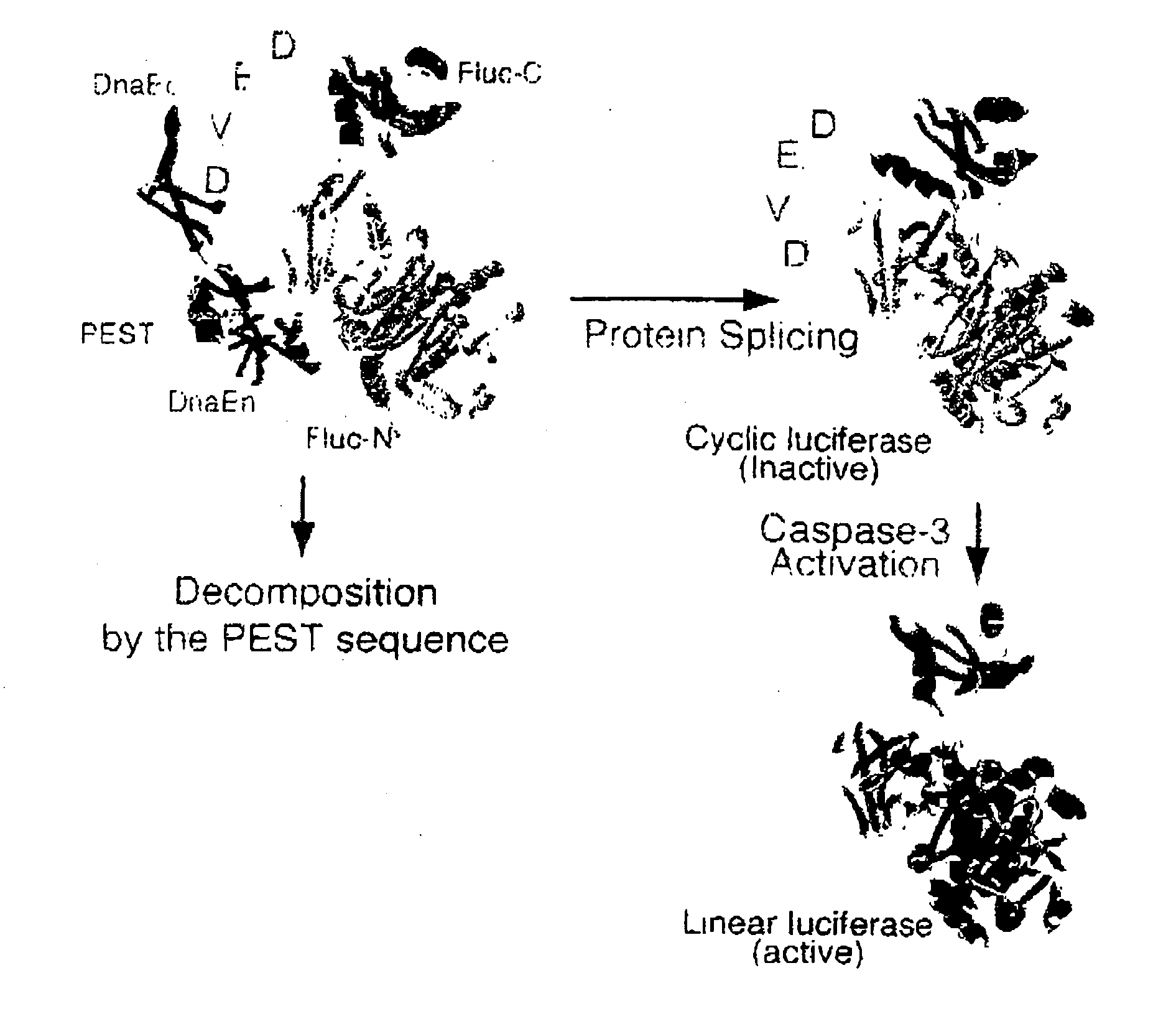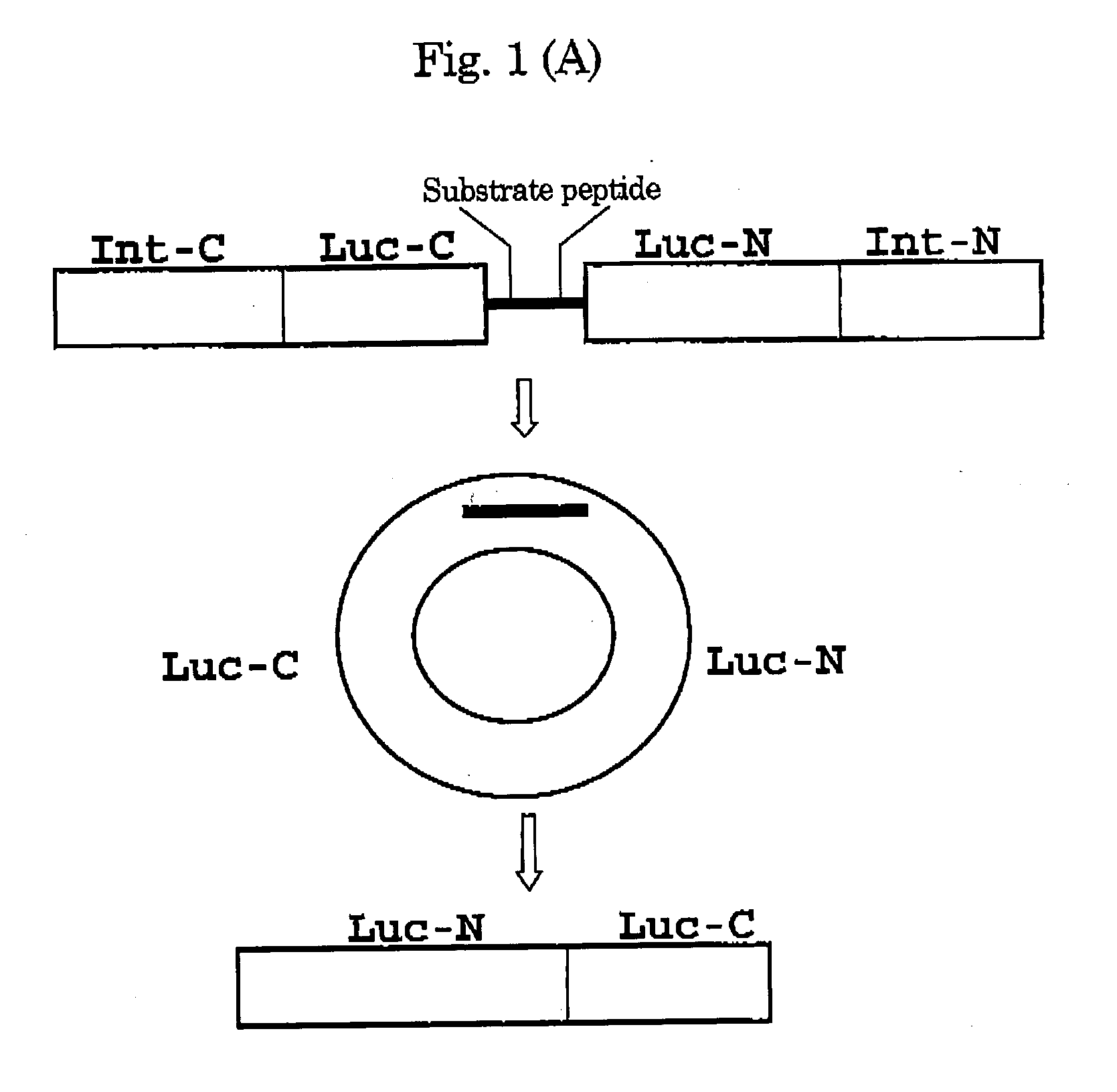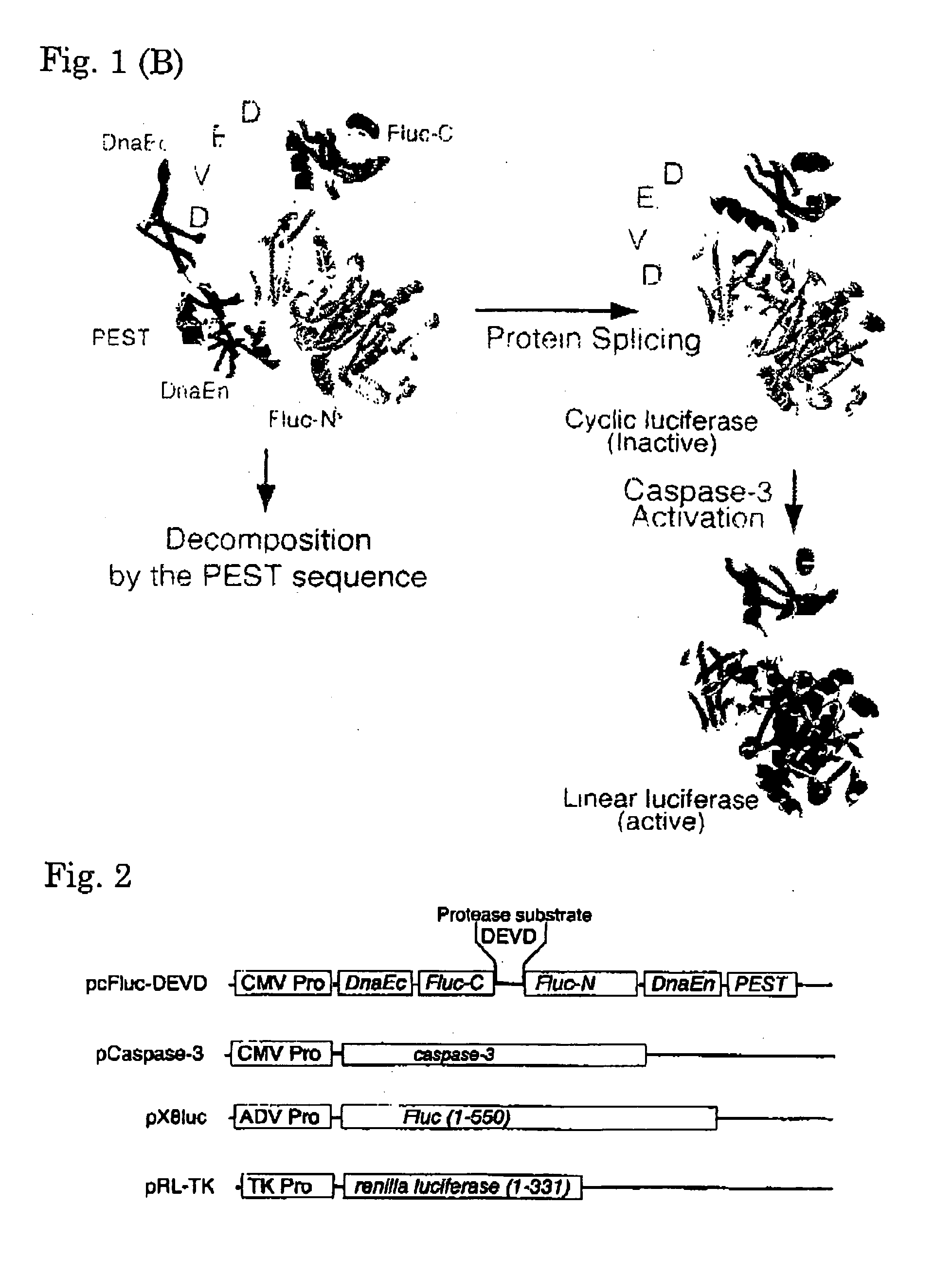Activated protease indicator
a protease indicator and activation technology, applied in the field of activation protease indicators, can solve the problems of insufficient quantification, limited number of cells that can be analyzed, and methods that require complex assay procedures, and achieve the effect of restoring luminescent function
- Summary
- Abstract
- Description
- Claims
- Application Information
AI Technical Summary
Benefits of technology
Problems solved by technology
Method used
Image
Examples
example 1
1. Method
1-1. Construction of Plasmid
[0070]Using the Escherichia coli strain DH5-α as a host, all plasmids were constructed. By PCR, an initiation codon and enzyme sites BamH I and Mun I were individually introduced in cDNA of the C-terminal fragment of DnaE. Using the Sal I site, cDNA of the C-terminal fragment (399-550 aa) of Fluc was conjugated to cDNA of the N-terminal fragment (2-416 aa) of Fluc, and subsequently, the Mun I and Hind III sites were independently introduced in the 5′ and 3′ termini, respectively of the resulting chimera DNA. By PCR, the PEST sequence and enzyme sites Hind III and Xho I were introduced in cDNA of the N-terminal fragment of DnaE. The resulting PCR products were sequenced with a DNA sequencer ABI prism 310 (Applied Biosystems, Tokyo, Japan), to determine the fidelity. These fragments were conjugated together, for subcloning into the BamH I site and Xho I site of an expression vector pcDNA 3.1 (+) (Invitrogen, Carlsbad, Calif.). Caspase-3 cDNA was ki...
PUM
| Property | Measurement | Unit |
|---|---|---|
| pH | aaaaa | aaaaa |
| time | aaaaa | aaaaa |
| body weight | aaaaa | aaaaa |
Abstract
Description
Claims
Application Information
 Login to View More
Login to View More - R&D
- Intellectual Property
- Life Sciences
- Materials
- Tech Scout
- Unparalleled Data Quality
- Higher Quality Content
- 60% Fewer Hallucinations
Browse by: Latest US Patents, China's latest patents, Technical Efficacy Thesaurus, Application Domain, Technology Topic, Popular Technical Reports.
© 2025 PatSnap. All rights reserved.Legal|Privacy policy|Modern Slavery Act Transparency Statement|Sitemap|About US| Contact US: help@patsnap.com



